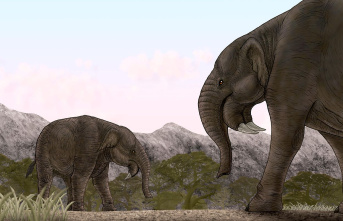Everyone knows mummies from school days, from museum visits or at least from films: corpses are elaborately embalmed and wrapped to protect them from decomposition and to preserve them for a long time - sometimes even for thousands of years. This phenomenon is known primarily from ancient Egypt.
But the world may have to get used to a different term for it. CNN reports that the word "mummy" is now viewed critically among some experts and is used only reluctantly. Several museums in Great Britain prefer to use the term "mummified person". This is to show respect.
It was intended to show that the mummified bodies once belonged to people - people with feelings, a personality, a life. The new choice of words should take this into account. Where possible and known, even the name of the person should be used.
Even the origin of the word is problematic, explained Jo Anderson from the Great North Museum: Hancock in Newcastle, England, in a blog post. It derives from the Persian word "mumia", which means something like "pitch". This ancestry can be traced back to the fact that the British colonizers opened up many mummified remains in the 18th and 19th centuries to get at the chemicals they contained. These were then used to make medicine or paint.
Even long after the end of the colonial era, the mortal remains are still surrounded by a certain myth. Many people still associate mummified people with something sinister or a curse - just think of the film title "The Curse of the Mummy". The museums also want to counter this cliché by changing the terminology. But the museums themselves are still in a learning and thinking process when it comes to treating exhibits that have a colonial or racist past appropriately.
At the Great North Museum: Hancock started this process by surveying visitors. It revealed that many did not identify a mummified woman as a real person. This is to be achieved by changing the language as well as a different presentation. "We hope our visitors will see their remains for what they really are: not an object for the satisfaction of curiosity, but a real human being who once lived and had a clear understanding of what happened to his body after his death should happen," museum director Adam Goldwater told CNN.
Quellen: CNN / "Daily Mail" / Great North Museum: Hancock











